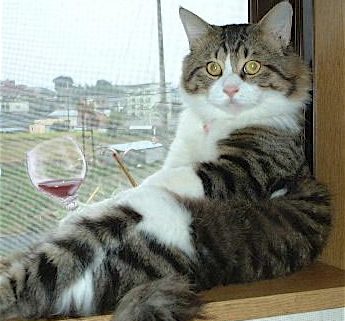Management of Feline Stress
From the late 20th century to the present, Stress has become a catchword of a generation. For humans, it has become a lifestyle – and indeed the amount we have to do, and the pressure we are under, are worn with pride as a statement of our importance. The cats with whom we share our lives are also not immune to stress, however they do not have the same choices that we do to minimise or manage it. Cats are known to be great stress relievers for humans, lowering blood pressure and decreasing anxiety and depression…it is only fair that we return the favour!
Stress and anxiety are actually adaptive responses designed to save life. The burst of energy given by adrenaline facilitates the “fight or flight response” which can either get you out of danger or allow you to stand up to your adversary. The excess hormones provided were never intended to be used in the body for an extended period, and they can be harmful if present in the case of chronic stress. The harmful effects over time can include reduced immune functioning; therefore it is most important that chronic stress is relieved. What follows is a brief overview of issues in stress: At the end are included a number of possible strategies for its management. Responses from different cats may be variable. However these are the commonly available ones that can be followed up if they seem appropriate for your cats.
The Management of Stress Has Three Components:
Diagnosis – Common Manifestations of Stress in Cats
- Spraying (even in neuters)
- Inappropriate elimination
- Pacing back and forth at perimeters of fences
- Loss of appetite
- Pulling out of fur
- Trembling
- Excessive meowing
- Hiding from the world, under beds, behind curtains etc
- Physical symptoms and illness – some illnesses and disorders (such as acne) have been associated with stress. Stress can also be a response to physical illness, so it is most important to check with your vet to rule out a medical condition
Assessment of Situational Factors – Common Causes of Stress
- Medical conditions/injury
- Confinement
- Overcrowding in multi-cat households
- New family member (human or animal)
- New cat in the neighbourhood
- Moving House
- Travel
- Parties/visitors
- Cat Shows
- Change of any kind. Cats differ in their responses to stress. Some may take major changes without batting an eyelid, while others may fall apart at the sight of an earwig. Their inherited temperament and early socialisation play a role.
Intervention – Common Methods of Stress Management
- Change the situation causing the stress
- Change the response of the cat
- Combination of 1 & 2
Changing the Situation
Changing the situation may be easy – it is often appropriate if the cat shows stress in a specific situation but seems fine the rest of the time. Removing the stressor or removing the cat from the situation may sometimes be the simplest option. For example, this may involve re-homing the cat if the cat is not suited to a multi-cat environment.
Changing the Response of the Cat
Vet Prescribed / Pharmacological – Discuss with your vet; reserve for severe and chronic problems
- Clomicalm- (Clomipramine) is commonly used by vets to treat anxiety disorders: it is an anti depressant that works best as a long term treatment combined with behavioural therapy.
- Valium- (Diazepam) a tranquilizer. But can have a paradoxical effect that makes the cat more agitated.
Non Vet Prescribed / Behaviors
- Feliway – A synthetic analogue of facial (friendly) pheromones. Especially recommended for spraying problems or inappropriate urination. Can also be used to make areas less threatening.
- Aromatherapy – Lavender essential oil can be relaxing – can be used in a burner as long as the room is well ventilated.
- Massage – Good to use on a daily basis for stressed cats.
- T-touch – A form of tactile therapy often using circular movements of the fingers on the skin. Can induce a trance-like state in some cats, or can send them to sleep.
- Herbal therapies – Valerian is sometimes used to calm cats.
- Homeopathic – Best known is probably Rescue Remedy flower essence.
- Nutritional supplements – B group-vitamins are reputed to reduce anxiety – many cats like the yeast supplements that provide these. There are also liquid and tablet preparations combing ingredients reputed to be relaxing, including amino acid tryptophan and b vitamins.
- Behavioural therapy – Classical conditioning techniques can help the cat to break a negative association with a situation or object by counter conditioning, desensitisation and graded exposure. Cats are presented to the feared stimulus / situation at the same time as being presented with a pleasant stimulus or being relaxed by massage. Operant conditioning techniques of reinforcement and shaping can help cats to relearn responses to stressors. These techniques can be combined easily with other therapies or greater efficacy.
Combination
A variety of methods is often the most effective. The environment can be changed, but sometimes the cat has learned the stress response so well that it can remain even when the stressor is removed. Cats can vary in their response to some of these methods and therefore it may be necessary to trial a variety of them to find what works for your cat. Some techniques, particularly the tactile ones of massage and t-touch are very useful for human-cat bonding and can also be relaxing for the human practitioner. Cats are intelligent and sensitive beings, and respond to the situation in the household, picking up tension and anxiety in their humans. Therefore, management of our own anxiety and stress is integral to minimising the stress felt by our feline friends.
By Rita Bruche
 719-475-7297 or
719-475-7297 or 




